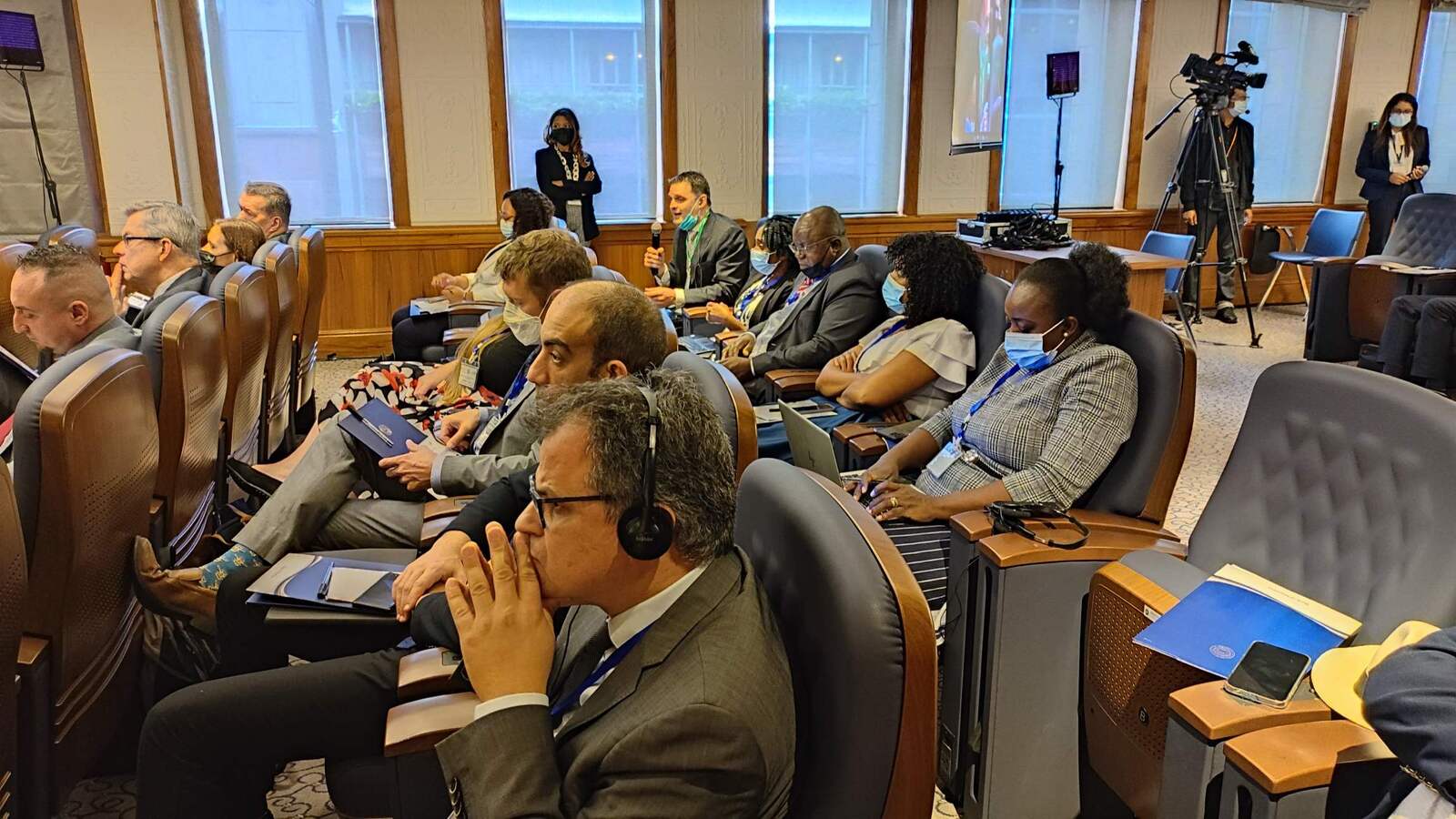Almost all major cases of money laundering involve the movement of funds across borders. Foreign currency exchange is not only an important way of cleaning money and removing the fingerprints of criminality, it is often used to protect criminal wealth and remove it from the jurisdiction where the predicate offence occurred. When criminal funds are moved to the jurisdictions of the world’s major currencies and put into stocks, real estate, companies and bank accounts they become surrounded by a ring of legal protection. Such currencies are also membership cards to the rich club.
Converting dirty cash into these currencies gives access to the luxuries, status and opportunities which criminals seek – why else break the law in the first place?
At the same time enabling the quick and easy conversion of value between different currencies is the foundation of an increasingly globalised economy; it is the oil that lubricates investment deals, trade, remittances and online purchases around the world. Correspondent banking is the mechanism whereby banks can exchange value in different currencies across borders. Most jurisdictions around the world require foreign banks to open a branch in a domestic bank to operate and serve customers. This can be prohibitively expensive for a foreign bank if there are few transactions and customers. Therefore, overseas banks often create a “corresponding” relationship with a local bank, particularly as they already know the local regulations and take on the burden of compliance and interaction with the local regulators.
For a long time correspondent banking services were treated as the invisible hand of the global financial system, and consequently were largely excluded from intelligence on money laundering and the laws that domestic banking activities and financial institutions were subject to. In the 1990s and then the 2000s growing policy attention on the transnational drugs trade and the emergence of the threat of international terrorism changed all that.

The costs of non-compliance in correspondent banking
Following the 9/11 terrorist attacks in the United States, the international community expanded and strengthened the remit of Financial Action Task Force (FATF) to tackle money flows that benefited criminals and terrorists. This led to three steps towards strengthening customer identification in international and domestic wire transfers. First, that originator information be specified on domestic and international funds transfers, second, that financial institutions retain and pass on information at each stage of the transfer process, and third, that countries require financial institutions to scrutinise and monitor transfers for which complete originator information is not available. Such obligations on wire transfer companies set the direction for how cross-border banking services would develop over the following years.
In the same period several scandals emerged which increased pressure to address international criminal cash flows. The Wachovia case was one of the earliest US banking scandals in the 2000s that exposed how criminals were exploiting weaknesses in international banking services. Drug money was being funnelled through the US bank, Wachovia, to casa de cambios in Mexico. The bank admitted “serious and systemic” violations of US law after laundering an astonishing $370 billion for Mexican and Colombian drug cartels.
Subsequently, more scandals emerged that revealed not only the scale of international money laundering but also the consequences of non-compliance. Two cases stand out, in particular, though they involve quite different predicate offences. The BNP Paribas case surfaced in 2014 when the correspondent bank received a record $8.9 billion fine for facilitating transactions involving Sudan, Cuba and Iran, in contravention of US sanctions. It was said to have led to a “sharp reassessment of the costs of financial crime compliance among correspondent banks – both with respect to the required level of due diligence and expected fines – and contributed to the withdrawal of correspondent banks from countries with a high risk of financial crime.”
Then, a few years later, a money laundering scandal emerged on a scale never seen before, which involved multiple jurisdictions and thousands of customers. The Danske Bank money laundering scandal took many years to emerge and be dealt with. Between 2007 and 2015 an estimated €200 billion in suspicious transactions was transferred from Estonian, Russian, Latvian and other sources through the Estonian branch of Danske Bank. It led to the collapse in the bank’s share price, the resignation of top bankers (criminal charges were dropped) and billion-dollar fines levelled by banking authorities.
It was said to have led to a “sharp reassessment of the costs of financial crime compliance among correspondent banks – both with respect to the required level of due diligence and expected fines – and contributed to the withdrawal of correspondent banks from countries with a high risk of financial crime.”
These developments put correspondent banking centre stage in tackling money laundering. It also became clear that tracking cash flows as they cross borders and taking enforcement action against criminals was necessary to the transparency of financial processes and services, aiding the stability and reputation of the banking system overall.
While European regulators and policy makers address vulnerabilities in correspondent banks headquartered in the EU, the EU Global Facility is concerned with assisting respondent banks, regulators and authorities located outside the EU. Over the long-term it seeks to prevent the withdrawal of international banking services to jurisdictions around the world – the phenomenon known as de-risking – while strengthening measures to address the particularities of due diligence around correspondent banking in the short-term.
From blind broker to Know Your Customer
Such has been the long journey to bring correspondent banks into the fold of AML rules and obligations. When they were treated as the blind brokers of international banking they were absolved of moral blame and legal responsibility for the cash flows they managed. We’ve seen how a series of scandals and unprecedented acts of international criminality shifted the focus and responsibility on those managing international banking processes.

While correspondent banks may not interface directly with the account holders or borrowers in another country they now need to understand the business and risks of the banks or financial businesses they serve. Regulators and authorities are increasing the pressure on correspondent banks and businesses offering financial services across borders to play their part in fighting money laundering. An analysis of the 2015 FIFA corruption case notes the US government’s notes the role played by international financial banking, and the associated services and advisers, in the corruption conspiracy.
Most recently, the Westpac case demonstrates that oversight and monitoring of correspondent banking has a long way to go. The case involved the failure to report $7.5 billion of payments into and out of Australia, equivalent to more than 20 million failures of AML compliance over a six-year period. While some steps had been taken to tackle the risks relating to Westpac’s involvement in a service which ran high volume, low value remittances from Australia to the UK, Philippines and elsewhere it was not enough. Despite Westpac staff being briefed about the typology of child exploitation they never made the connection to the sort of funds flowing through the remittance service they operated, LitePay International. What is startling about this case – alongside the $1.3 billion penalty Westpac had to pay – is that little had been learned from the similar cases several years previously involving drug money being transferred via remittances from the US.
…There is no expectation, intention or requirement for the correspondent institution to conduct customer due diligence on the respondent institution’s customers.”
Know Your Customer is axiomatic in anti-money laundering. If a bank or professional knows their customer well enough, goes the logic, then they can be responsible for identifying the criminal and their cash. The principle is now being transposed to correspondent banks and a range of financial professionals too.
According to the FATF Guidance on Correspondent Banking, “there is no expectation, intention or requirement for the correspondent institution to conduct customer due diligence on the respondent institution’s customers.” It is enough to know and understand the respondent bank’s overall business, it’s customer base and processes. But in higher risk jurisdictions the expectation is to carry out enhanced due diligence involving knowing the respondent bank’s customers. Yet, information sharing across borders is difficult. When the Danske Bank scandal was investigated, it emerged that the Estonian authorities had passed on intelligence about suspicious money flows, but it had never been translated into Danish.
Too often, when regulatory or supervisory pressure has been brought to bear on banks and other financial institutions their reaction has been to de-risk. Managing compliance at home has often involved disconnecting from banks abroad, and the trend in de-risking has increased. Whole countries have been cut off from the international financial system as a result of flawed information sharing, weak AML regimes and a loss of confidence across borders.
“Correspondent banks find themselves at the coal face of making difficult decisions about risk. Their business necessarily involves multiple jurisdictions, each with differing laws and regulatory regimes, and different languages,” explains Arnaud Stien, the EU Global Facility’s Key Expert on correspondent banking. “Managing and sharing information across borders to enable effective risk assessments presents particular challenges in running processes and developing the necessary expertise.”
Navigating the specific challenges of correspondent banking
This is where the EU Global Facility comes in. It can help regulators and financial institutions to navigate the difficult waters of correspondent banking compliance, and help to maintain the confidence and connections to international banks.
There are many ways the EU Global Facility contributes with its expertise, advice and support. A number of countries and institutions around the world can testify. Pauline Charazac, Adviser on International and Institutional Relations to the Bank of Mauritius highlights that “Through the cooperation established with the EU Global Facility, the Bank of Mauritius has embarked on a pragmatic and fruitful learning journey. The support provided by the EU Global facility team of experts led by David Hotte and coordinated by Arnaud Stien was and continues to remain highly beneficial to the central bank and to Mauritius.”

The EU Global Facility’s experts indeed help jurisdictions to implement FATF recommendations 10 and 13, which concern ongoing checks, business monitoring and other issues relating to correspondent banking. De-risking arises not just from risky jurisdictions it also results from when data on the respondent bank’s business or – in the case or riskier jurisdictions – end customers is unavailable, or when risky services or products are offered. Utilities can help to ease and increase the efficiency of information flow.
bccurately assessing risks associated with the business of a correspondent bank’s customers is key. As the EU’s Fifth Directive on AML states, “not all cross- border correspondent banking services present the same level of money laundering and terrorist financing risks, the intensity of the measures laid down in this Directive can be determined by application of the principles of the risk based approach.” The Wolfsberg Group’s due diligence questionnaire has become the gold standard in assessing risks in correspondent banking. The EU Global Facility helps jurisdictions to effectively apply this tool to mitigate risks.
“We help authorities to develop processes for information sharing and applying technology, like utilities, to increase compliance related to correspondent banking,” says Arnaud. “A 360 degree understanding of the risks involved in correspondent banking is a vital part of any country’s anti-money laundering measures.”
”“A 360 degree understanding of the risks involved in correspondent banking is a vital part of any country’s anti-money laundering measures.”
Technical Assistance in Practice
How the EU Global Facility supported Mauritius in enhancing its Correspondent Banking system
Since taking office in March 2020, Bank of Mauritius Governor Harvesh Seegolam has made international compliance and cooperation one of his priorities. We speak to him today to understand how the support provided by the EU project has helped the country prior to and following its official delisting from the FATF Grey List.
How did the Bank of Mauritius (BoM) enhance its engagement with banks to address concerns related to money laundering and terrorist financing risks?
Harvesh Seegolam: “Mauritius, as the only sub-Saharan international financial centre, is highly dependent on global international trade and cross-border flows of funds. In this context, the Bank of Mauritius (BoM) plays a key role in ensuring that international AML/CFT standards and norms are being strictly implemented by the relevant operators in the course of correspondent banking activities.
At the BoM, several initiatives have been taken to encourage banks to strengthen their ML/TF risk management frameworks to align them with international AML/CFT standards such that significant CBR termination does not crystalise. As banks were subject to enhanced due diligence from their correspondent banks subsequent to the listing of Mauritius on the FATF grey list and the EU/UK lists, the BoM heightened its engagement with banks so that the latter can apprise correspondent banks of the steps and actions being taken by the jurisdiction to improve its compliance with the FATF standards. This communication provided correspondent banks with the comfort that there was still a strong supervisory regime and also of the unflinching commitment of Mauritius to address the deficiencies identified in the Mutual Evaluation Report (MER).”
Can you give us an example of the collaboration between the EU Global Facility and the BoM?
H.S: “As part of the strong partnership established over the last 3 years with the EU Global Facility on AML/CFT to assist Mauritius in complying with the 40 recommendations of the FATF, the BoM co-hosted in May 2022 in Port Louis a Workshop on Correspondent Banking with the EU Global Faciltiy. The event brought together international speakers and delegates, witnessing the diverse participation of many central banks and key international institutions such as the IMF, the ESAAMLG and SWIFT, amongst others. It was indeed an opportune time to partake the experiences of Mauritius in the journey of its fight against ML/TF and sought to encourage information sharing amongst the community of central banks as well as public/private sector to address the challenge of retaining and maintaining correspondent banking relationships.”
What was the impact of the regional conference and did it successfully achieve the anticipated goals and outcomes?
H.S: “The workshop was deemed a true success and a concrete example of the fruitful collaboration established between the BoM and the EU Global Facility. It certainly attained its objectives through the presentations and panel discussions, the potential implications of the retreat of correspondent banks on the financial systems, remittances, and financial inclusion (the more so on African countries and small economies), which were widely discussed.
This workshop brought about the realisation that intensified efforts were needed at the international, regional, and country levels to deepen the understanding of issues related to Correspondent Banking Relationships (CBRs), develop policy responses, and identify actionable industry solutions. The ML/TF concerns were referenced as one of factors driving this retreat of CBRs and rising up to FATF AML/CFT standards was seen as an overarching objective to be attained to maintain the confidence of correspondent banks.”
More broadly, what measures did the BoM take to ensure the resilience of the banking sector and the rebound of international business following Mauritius’ removal from the FATF Grey List?
H.S: “Since the issuance of the MER on Mauritius back, the BoM had taken a number of initiatives to protect the banking sector, which included regular surveys on CBRs, enhanced monitoring of cross border payments, implementation of the Risk Based Supervisory Framework, meeting up with representatives of correspondent banks, bringing about amendments to the regulatory and supervisory framework. It also launched initiatives to improve information sharing such as the Centralised KYC Registry and to improve transparency on Beneficial Ownership project, amongst others.
The Bank of Mauritius has maintained its communication strategy with the industry; it has a Banking Committee in place whereby it meets with CEOs of banks on a quarterly basis as well as a Banking Resilience taskforce to discuss on matters pertaining to the banking sector.
Finally, with regards to access to foreign currencies, the liquidity situation has remained quite comfortable in the market though at times there has been some supply constraints but these arose mainly on account of external factors such as the ripple effects of the Russia-Ukraine war, high inflation environment, rapidly rising interest rates in many economies and high financial markets volatility.”




